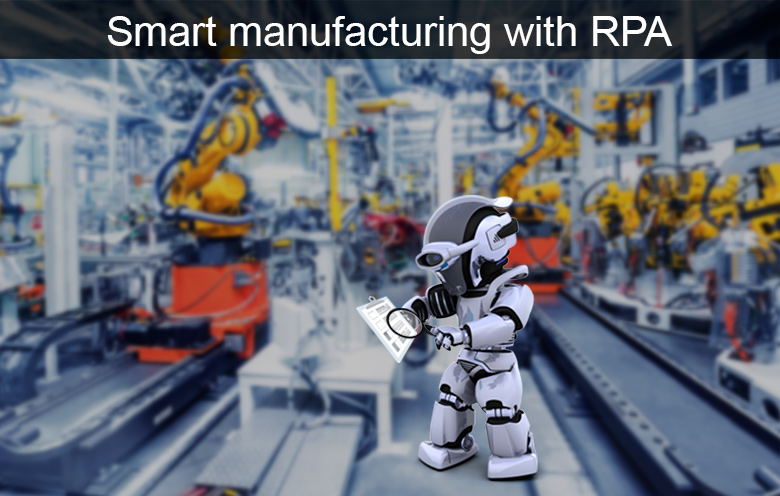Supply chain management is changing at a very fast pace, and companies are continually looking for methods to streamline processes, save costs, and enhance precision. Robotic Process Automation (RPA) has proven to be a highly effective tool to achieve these goals.
RPA in supply chain brings automation to rule-based, recurring tasks, ranging from stock checks to order processing, that increase agility and accuracy of the data throughout logistics activities. Through the automation of these time-consuming tasks, RPA enables companies to make faster, better-informed decisions, minimizes the margin for error and develops leaner, more robust supply chains.
In this blog, we’ll explore the key advantages of implementing RPA in supply chain processes, its practical use cases, real-life examples, and more.
What is RPA in supply chain management?
RPA implementation in supply chain management is the use of software robots to automate mundane and repetitive tasks such as order processing, data entry, and inventory management. RPA enables organizations to perform such operations rapidly and accurately with minimal human error.
Robotic process automation yields real-time information, enhances efficiency, and reduces the cost of operations. It runs around the clock, allowing supply chain managers to focus on more strategic issues rather than routine activities. RPA enhances the supply chain to become more efficient, reliable, and responsive to change.
Key challenges in supply chain that RPA solves
-
Manual data entry and processing
Supply chain management includes a huge amount of data which needs proper input, processing and analyzation. When it is handled manually, it becomes time-consuming, tedious, and prone to errors, resulting in delays.
-
Lack of real-time visibility
Supply chain requires real-time visibility into operations for making informed decisions. Conventional supply chain management systems do not have the capability to provide updated data. This leads to delays in identifying issues, inefficiencies in operations, and missed opportunities for optimization.
-
Fragmented systems and processes
Organizations use various, diverse systems to handle several aspects of their supply chain. This division leads to communication failure, data silos, and disunity throughout the supply chain.
-
Inefficient order management
Manual management of orders is difficult and leads to delays, errors, and missed opportunities. Order management can also strain the workforce and reduce overall productivity without automation.
Benefits of RPA in supply chain management
-
Enhanced accuracy
RPA makes data handling accurate by automating tasks that are prone to error, when handled manually. RPA automates order management and inventory control, reducing human errors and ensuring precise data handling.
-
Increased efficiency
Supply chain supervisors manage various time-intensive tasks, which can hinder overall productivity. RPA applications operate at high speed, significantly reducing data management time. This leads to enhanced business efficiency as routine tasks are automated, allowing supervisors to focus on strategic activities.
-
Cost reduction
RPA systems are accurate at performing tasks, reducing the possibility of errors and removing the need for repetitive human actions. This speeds up task completion. And since companies don’t have to hire additional resources, it even saves costs.
-
Valuable insights
RPA helps in extracting useful insights from the data collected in different supply chain processes. With IoT sensors integrated into systems, businesses can access all the data from various resources. RPA transforms this data into actionable insights helping companies make informed business decisions.
-
Streamlined processes
With the high number of orders, companies require more production capacity in business. Deploying scalable RPA systems helps in streamlining the processes and saves companies from hiring additional workers temporarily which incurs high costs. These systems handle huge work volumes efficiently and help avoid substantial financial investments.
-
Improved customer satisfaction
RPA automates updates through SMS or email, improving customer service. This keeps customers well-informed and minimizes the workload on customer service teams. It helps them focus more on complex tasks, improving the overall service experience.
Which functions benefit from RPA in supply chain management?
Supply chain management today is linked to more complex consequences, such as customer experience, quality of product, and eventually, your bottom line. That means every department within the organization can gain from applying automation solutions.
-
Retail: In addition to automating repetitive tasks, RPA automates tasks like inventory management, order processing, data entry, and customer service, freeing up human employees in retail for more strategic work.
-
Logistics: RPA implementation in logistics helps to monitor shipments and shipping modes in real-time. These robots boost your efficiency and safeguard your reliability, delivering goods faster and safer.
-
Manufacturing: In manufacturing, knowing how much you’ve got and what, and how quickly you’re consuming it, are all important considerations. With RPA, you will get reports that are automatically created, helping you stay informed on the status of these moving pieces.
- Customer service: Our RPA bots can assist in fielding customer questions, resolving issues and educating customers. Consequently, their issues will be resolved faster, and queries will be answered quicker.
Top 7 RPA use cases in supply chain
Order processing automation
The integration of RPA into the system automates the whole process of order processing, from verifying the customer information to updating inventory status immediately and creating shipping labels rapidly. The RPA systems reduce the need for manual data input and speed up the order filling process considerably.
Supply chain automation with RPA helps track inventory levels and automatically orders more when the levels go below a predetermined threshold. This reduces the risk of human error and saves time.
Supplier management
RPA undertakes functions that are hard for human beings to perform, such as contract negotiation, bill processing, and suppliers’ performance tracking. Automation enhances management of time and increases accuracy in handling suppliers, hence raising overall business efficiency.
Shipment tracking
RPA automates real-time shipment updates by pulling data from carriers and syncing it across systems. This gives all teams a unified view, enabling quick responses to delay and keeping customers informed, improving both efficiency and satisfaction.
Invoice processing
The integration of RPA into invoice processing is a major step towards maximizing operational efficiency. By using intelligent automation, organizations streamline the task of processing invoices. The efficient integration of RPA allows companies to redeploy human resources more strategically, making the financial process more agile and responsive.
Demand forecasting
Smart bots built using RPA technology gather and clean vital data from different sources like sales reports, emails, and vendor files. This ensures accurate outputs and maximizes forecasting.
Processing returns
RPA automates operations, processes data for efficient handling, improving customer communication, avoiding fraud, and making refunds on time. It also detects policy violations, monitors deadlines, and aids accounting with automated document management.
Data analytics and reporting
The incorporation of RPA into reporting and data analytics drives supply chain management to a more informed and agile future, allowing organizations to respond rapidly to changing market conditions.
Real-life examples of RPA in supply chain management
- Walmart: Walmart uses more than 500 bots to manage everything from fielding employee inquiries to reading audit reports and tracking inventory movement. This approach extends far beyond simply flagging slow-moving items and surplus. Even small changes in their procedure have a significant effect on their account receivables. For Walmart, the move to RPA was not only about increased efficiency but also a significant step in cost reduction.
- United Parcel Services (UPS): UPS Europe shows the ability of automation with an Automated Storage and Retrieval System (ASRS) at a Dutch fulfillment center. AutoStore technology increases storage by 400%, maximizes space, and minimizes physical stress on employees.
- FedEx: FedEx has implemented RPA as part of its supply chain business in Singapore. They provide self-collection of packages via strategically located lockers and collection points. Using the FedEx Delivery Manager International (FDMI) platform and RPA technology, customers can easily select their preferred point of collection, reducing the environmental footprint of last-mile delivery.
How to implement RPA in your supply chain
Intelligent automation in supply chain management involves a few key steps to ensure success:
1. Set clear goals and expectations: Start by defining what you want to achieve with RPA, both in the short term and long term. Know how you’ll measure success. For example, if an RPA bot places customer orders directly into your ERP system after checking inventory, consider whether you’re measuring success by faster processes, improved accuracy, or overall productivity.
2. Identify the right processes to automate: Not all supply chain tasks are equally suited for automation. Focus on processes where RPA can offer clear value. A few starting points include:
- Inventory management: Track stock levels in real time
- Order fulfillment: Ensure timely and accurate deliveries
- Transportation management: Monitor the movement of goods effectively
3. Choose the right RPA solution: There are many RPA tools available, but not all will fit your needs. Look for a solution that is scalable, secure, and easy to integrate with your existing systems. Start by understanding your goals, then find a tool that aligns with them.
4. Prepare for change management: As your RPA usage increases, managing changes becomes more complex. Have a clear process for handling updates, which includes:
- Keeping track of changes and their reasons
- Responding quickly to new requirements
- Communicating with all stakeholders
- Staying focused on the intended results
Future trends in RPA and supply chain
-
Applying AI and IoT for intelligent operations
The implementation of AI and IoT drives productivity and minimizes time and expense. AI assists in automating decision-making, allowing managers to devote time to strategic activities. In the meantime, IoT enables real-time monitoring of resources and shipments, enhancing visibility and efficiency.
-
Embracing digital supply chain twins
According to the shift toward newer technologies such as AI and IoT, real-time data is essential for efficient decision making. Digital supply chain twins, clone processes in digital form and uses IoT devices, enabling real-time insights. This strategy enhances the value of AI and IoT, propelling their advantages across multiple industries.
-
Transitioning to cloud solutions
The changing supply chain strategies are also backed by the increasing popularity of cloud-based solutions, providing robust security and functionality equivalent to on-premises solutions. Cloud-based solutions facilitate quicker implementation and cost savings.
-
Automation and robotics
Autonomous Mobile Robots (AMRs) are gaining traction, especially for their ability to work remotely and integrate with warehouse systems. The focus is on enhancing productivity and upskilling workers – not replacing them.
Achieve more with a streamlined, automated supply chain
A streamlined, automated supply chain minimizes complexity and helps organizations find new potential for growth, responsiveness, and customer satisfaction.
According to Deloitte’s Global RPA Survey, organizations implementing RPA report an average capacity increase of 20% to 52%. This data supports the fact that RPA is a proven driver of improvement in supply chain operations across industries.
Automating supply chain processes presents an opportunity to enhance efficiency, accuracy, and scalability. By automating manual processes, repetitive processes and improving data accuracy, organizations can create responsive, agile supply chains that can address customer needs and respond to market conditions. For more details on how RPA implementation can help in the growth of your business, talk to our experts.
FAQs
1. What processes in the supply chain can be automated using RPA?
You can automate several processes in supply chain using RPA, including order processing, inventory management, invoice processing, data entry and shipment tracking.
2. How is RPA different from traditional supply chain automation tools?
RPA is more flexible compared to the traditional supply chain automation tools. It can work with existing systems without needing big changes. It can handle repetitive tasks automatically and doesn’t require much human intervention.
3. Is RPA suitable for small and mid-sized supply chain operations?
Yes, RPA can be used for small and mid-sized supply chain operations. It can help them save time, reduce errors, and lower costs, making supply chain tasks more efficient.
4. How long does it take to implement RPA in a supply chain process?
The time to implement RPA in a supply chain process depends on the complexity of the tasks. It can range from a few weeks to a few months to fully implement RPA.
5. How much does it cost to implement RPA in a supply chain process?
The cost of development depends on several factors like project complexity, data processing and automation required. And the pricing relies on development timeframe, the number of resources involved, and their expertise.




